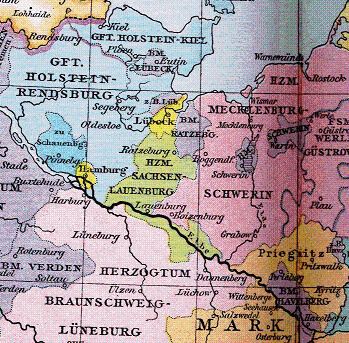Government monarchy Usurpation in 1640 after the comital male line died out 1640 Founded 1290 Date dissolved 1640 | Preceded by Succeeded by | |
 | ||
Religion Rom. Catholic to 1561,then mainly Lutheran,Calvinist from 1601 andJewish from 1621, esp. in Altona | ||
The County of Holstein-Pinneberg was a small territory which existed from 1290 until 1640, centred around Pinneberg in modern-day Schleswig-Holstein, Germany.
Contents
Rise and fall of the county
Holstein-Pinneberg was one of the territories partitioned from the County of Holstein-Itzehoe (the others being Holstein-Rendsburg and Holstein-Plön) following the death of Gerhard I. This resulted in the Pinneberg line of the Counts of Schauenburg and Holstein, who were called Holstein-Pinneberg or Holstein-Schauenburg. The Schauenburgs (later, on the Weser, called the Schaumburgs) ruled over the County of Schaumburg (which became a principality in 1620) and over Holstein-Pinneberg.
In 1375, Prince-Archbishop Albert II of Bremen mortgaged the Haseldorfer Marsh to Adolphus VII. The prince-archbishop of Bremen later failed to redeem the mortgage, and the Haseldorfer Marsh has been part of Holstein ever since. Whereas in 1537 Christian III of Denmark introduced the Reformation in all his four realms, Denmark, Duchy of Holstein, Norway and Schleswig, Holstein-Pinneberg remained Catholic until 1559. After the Schaumburgs died out in 1640 (the other lines in Holstein had already died out by 1459) the County of Schaumburg was divided and the County of Holstein-Pinneberg was absorbed into what was now the Duchy of Holstein (formerly the County of Holstein-Rendsburg). In 1650, the County of Rantzau was created from the northern third of the territory.
Counts of Holstein-Pinneberg
The following counts ruled over Schaumburg and Holstein-Pinneberg:
